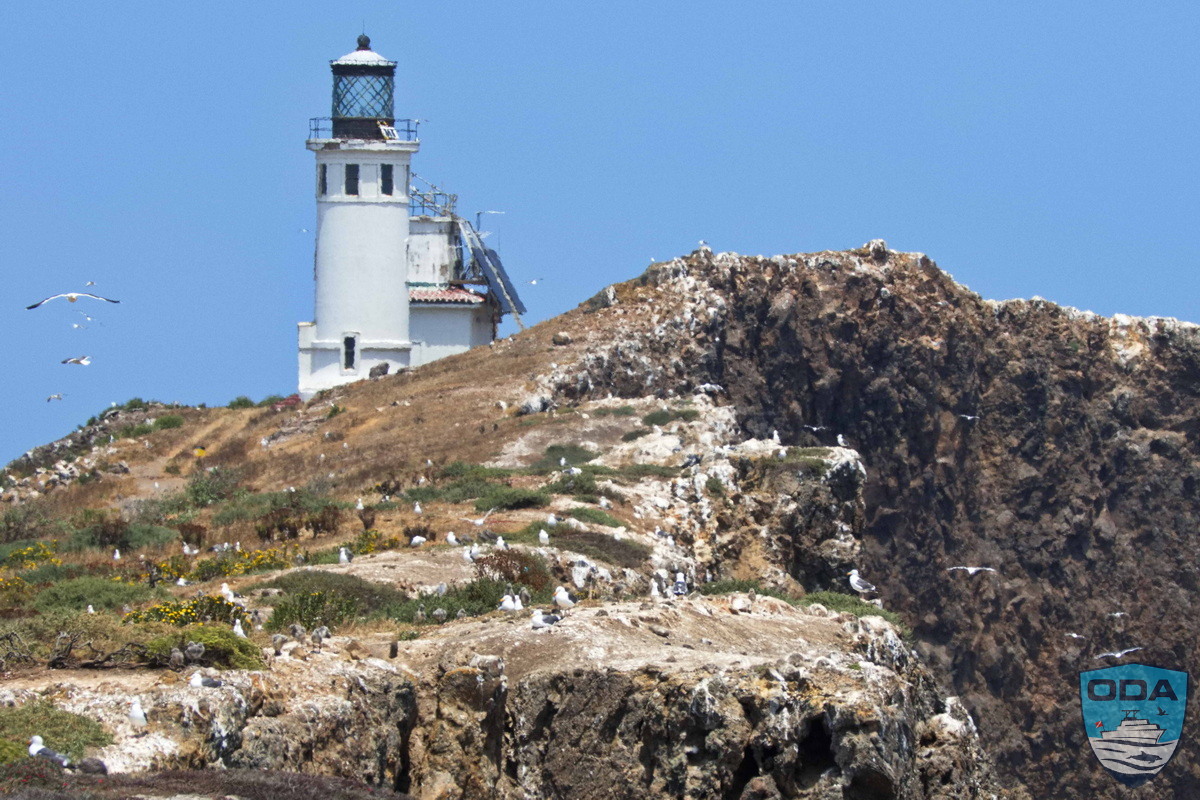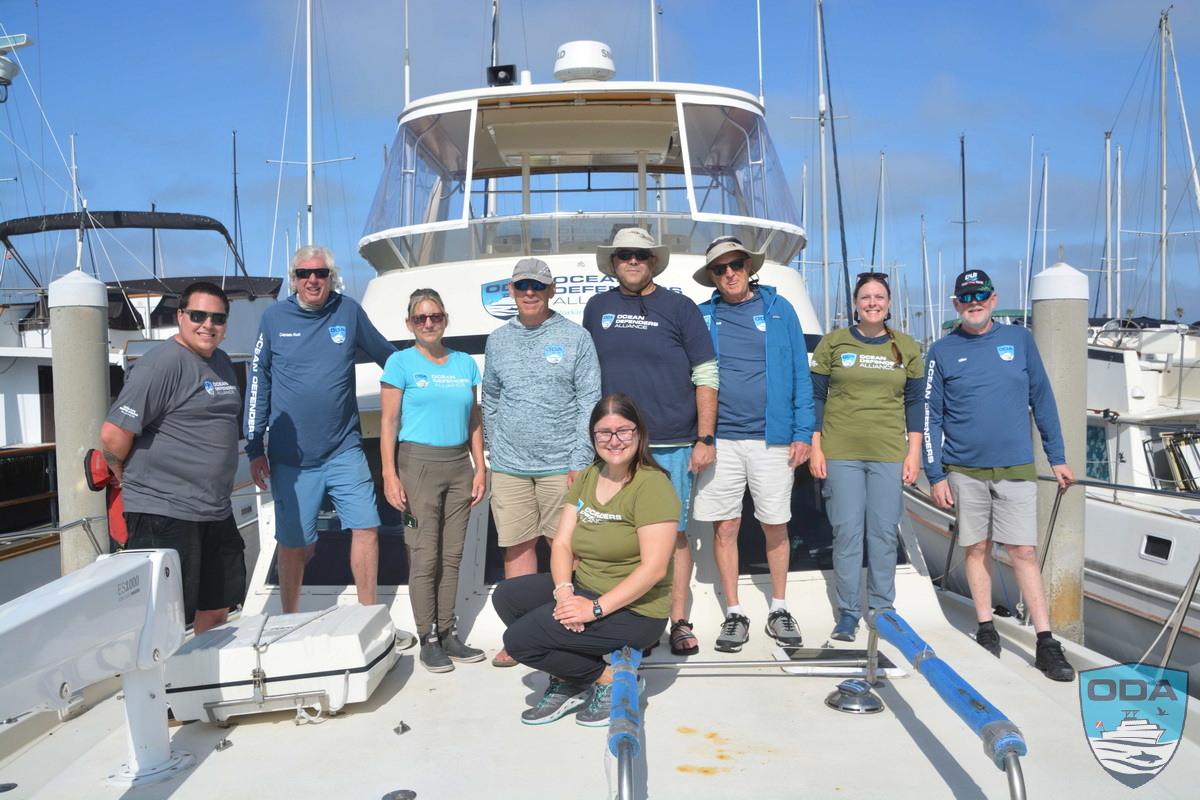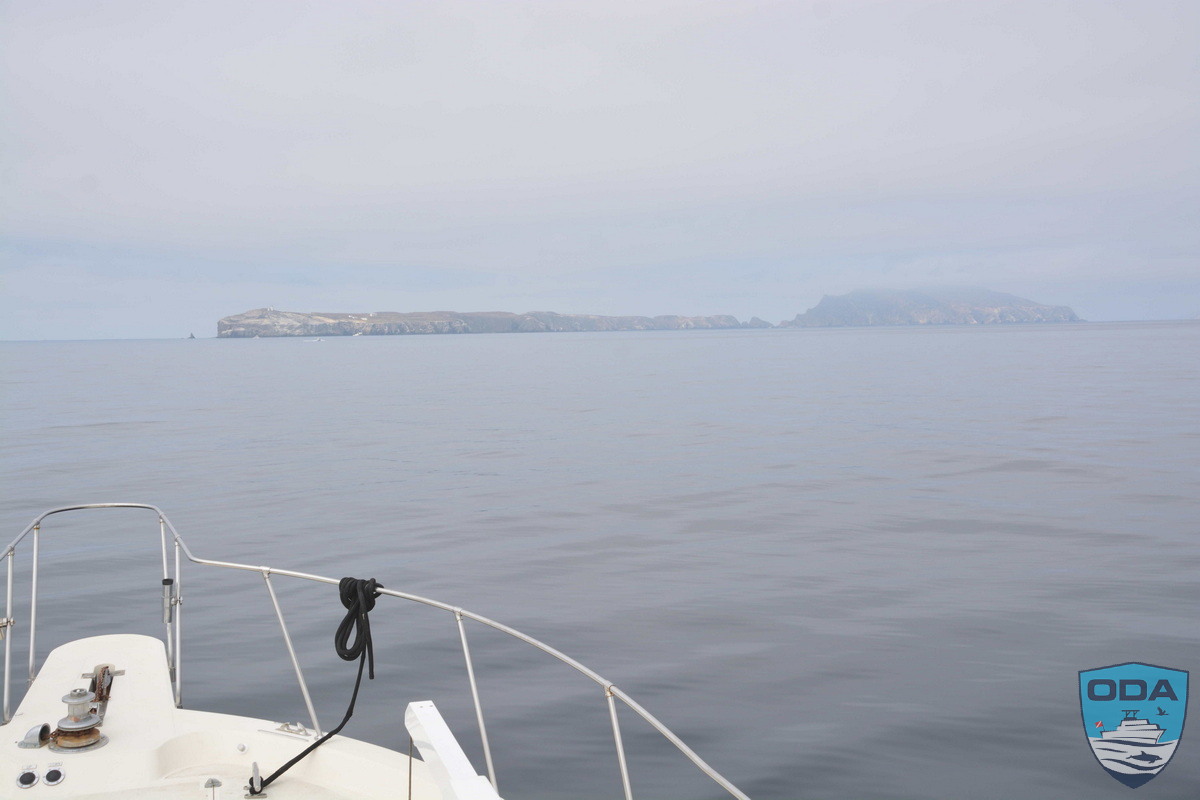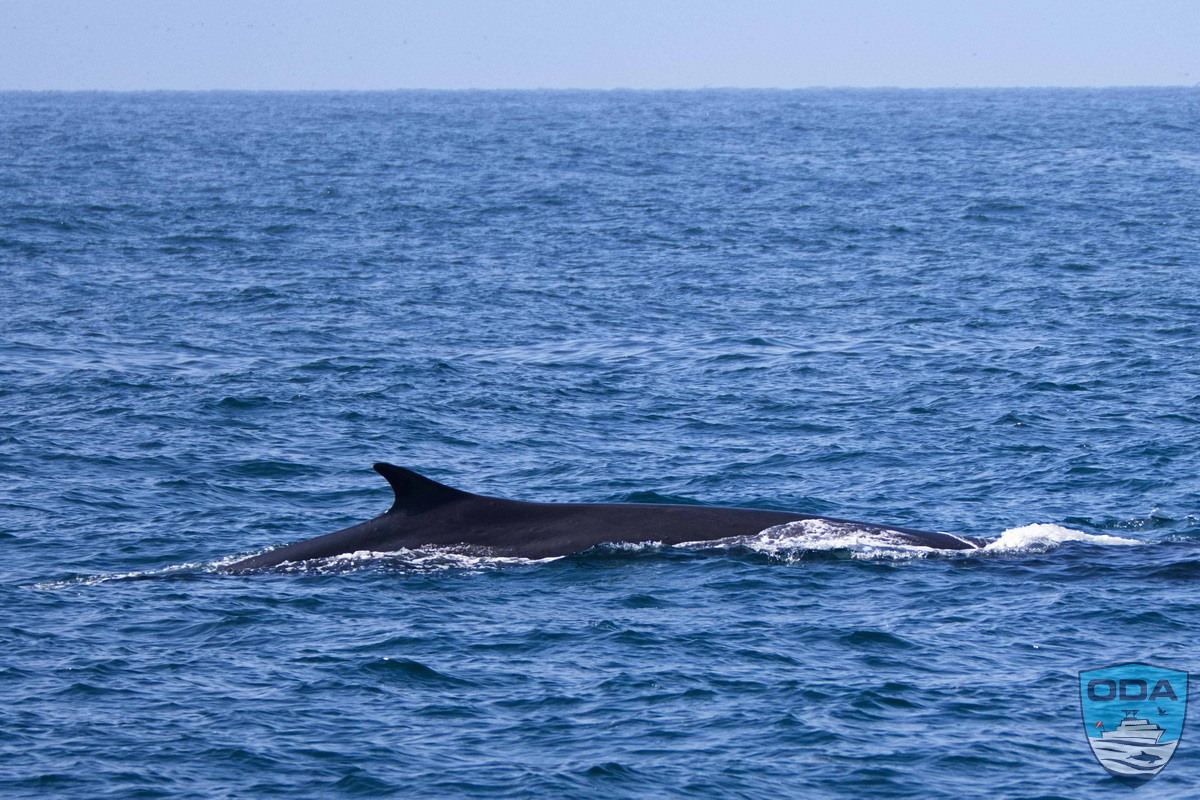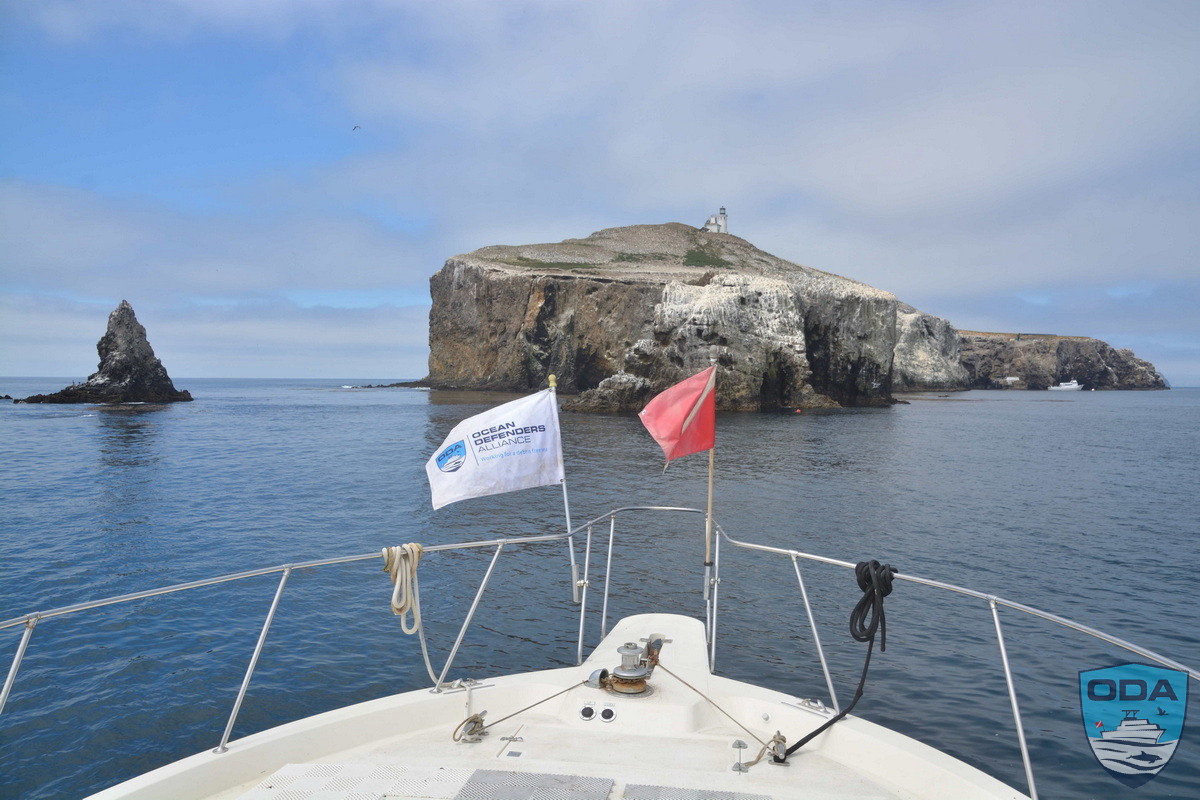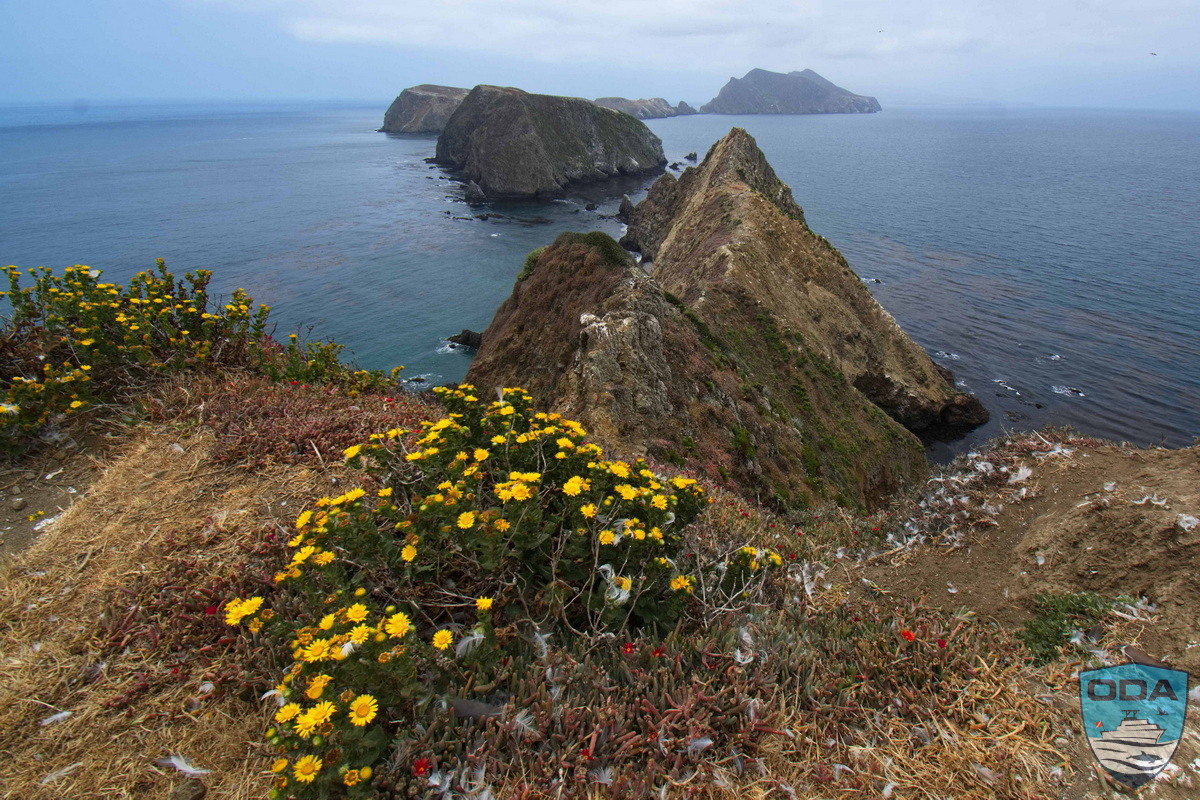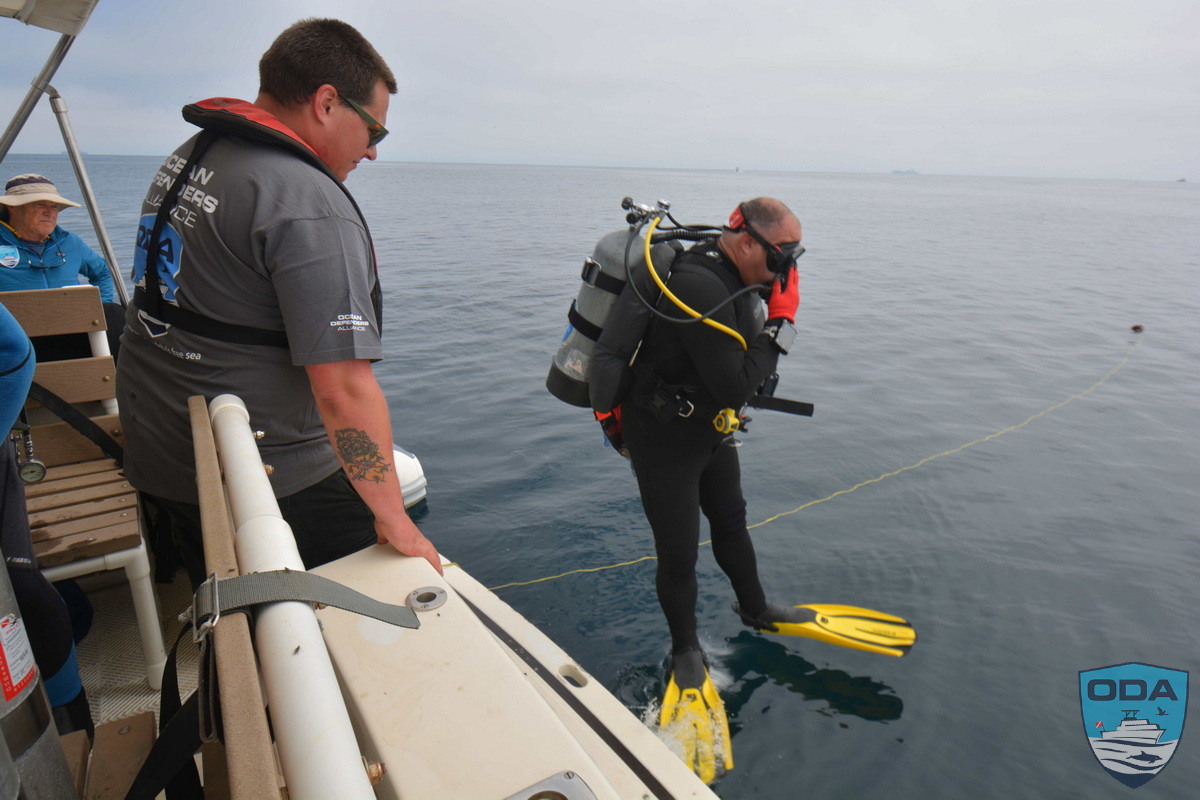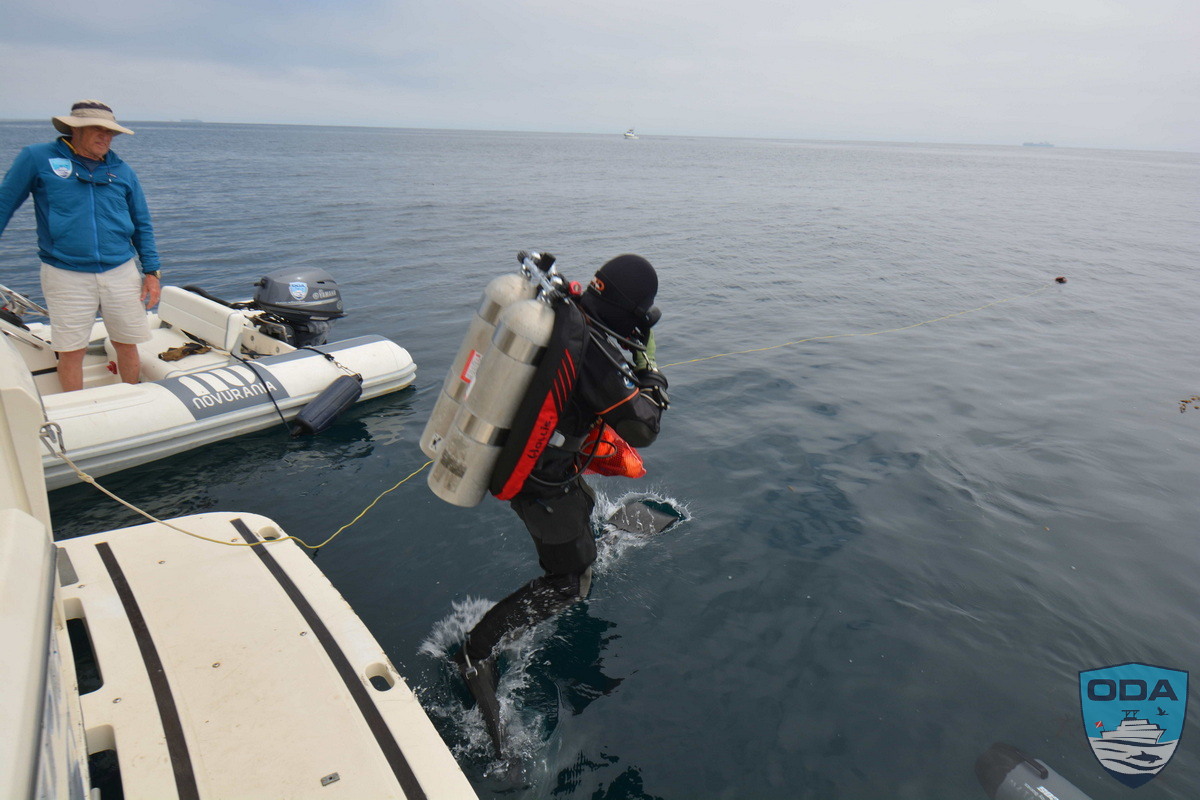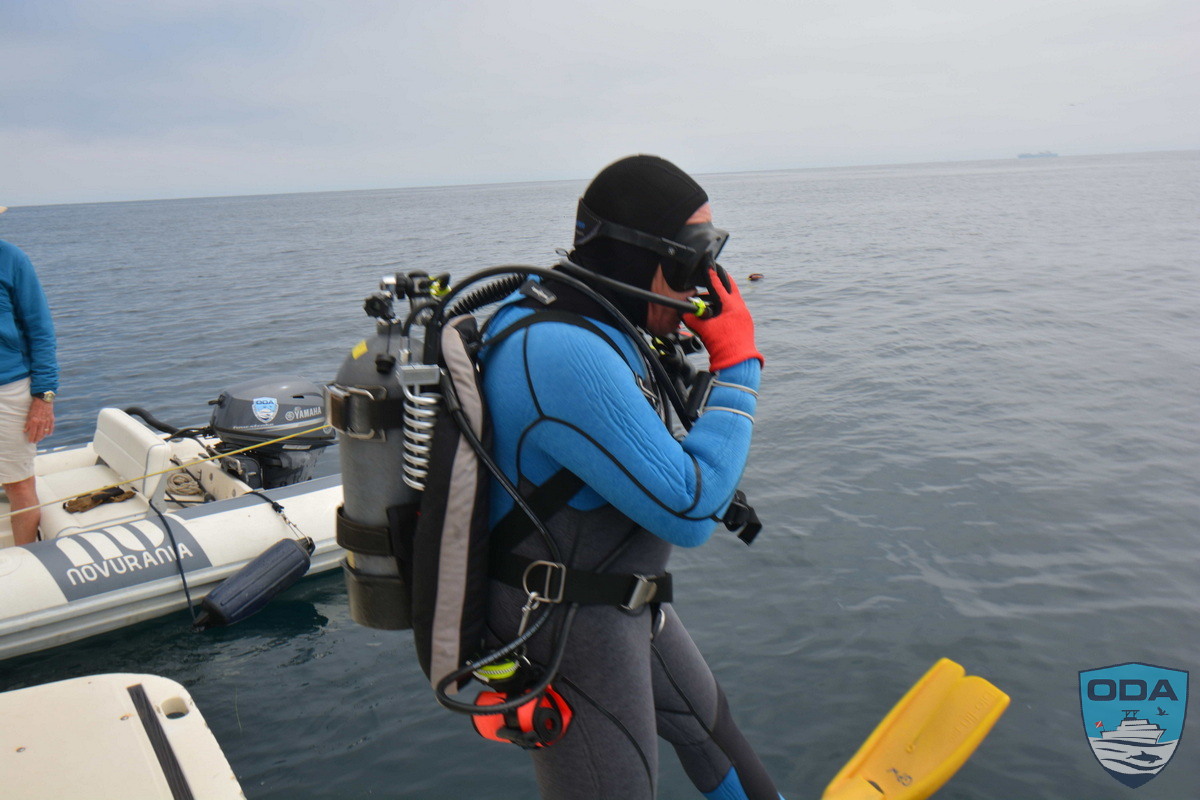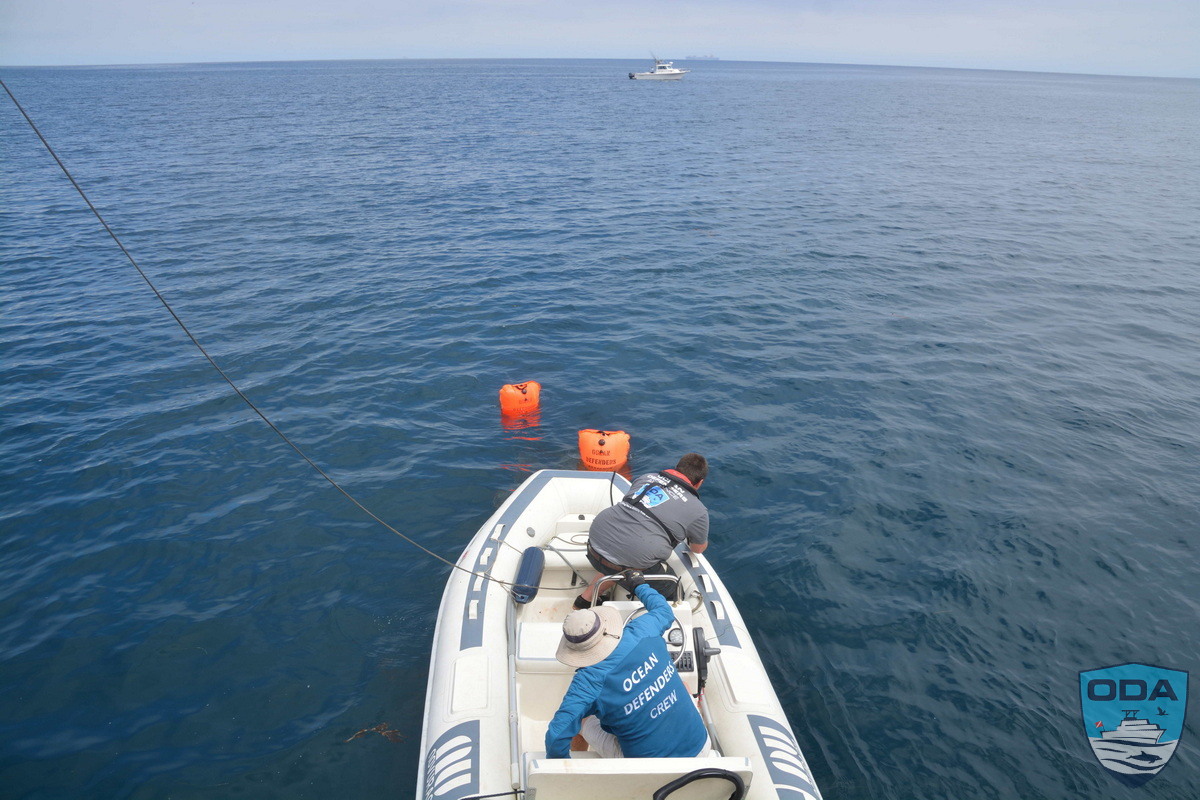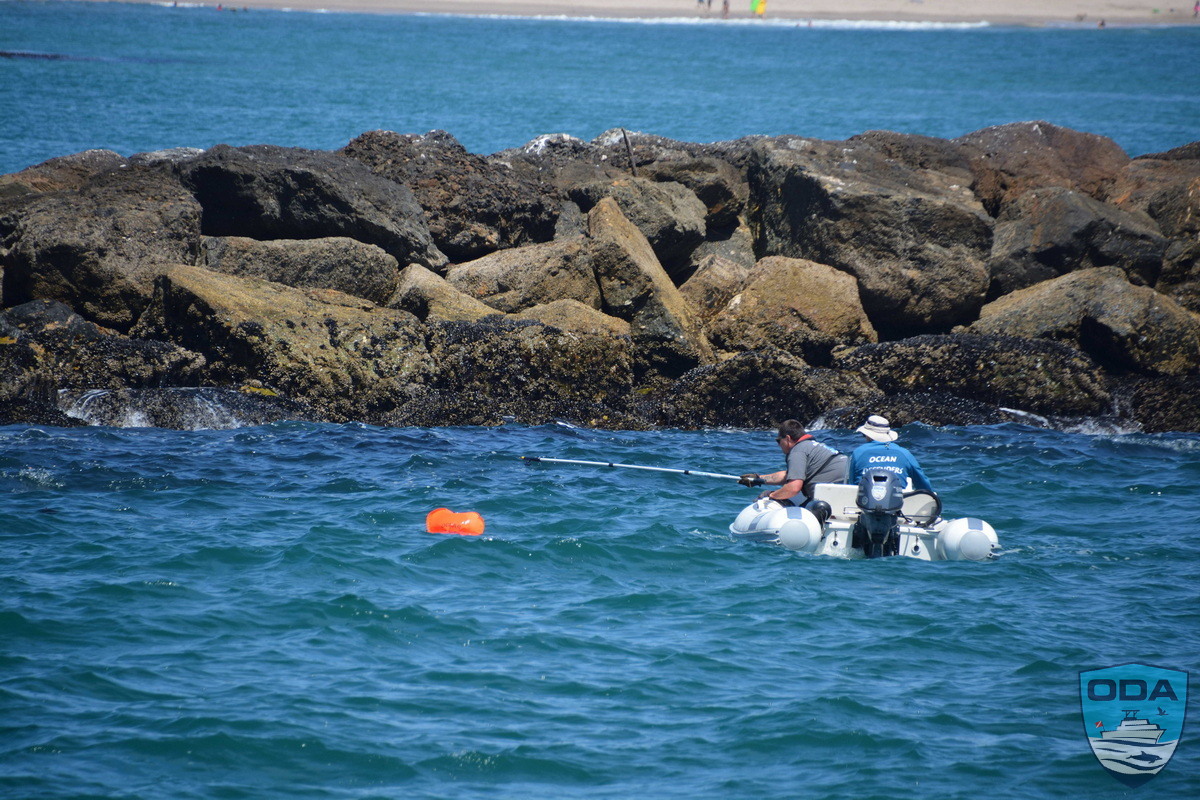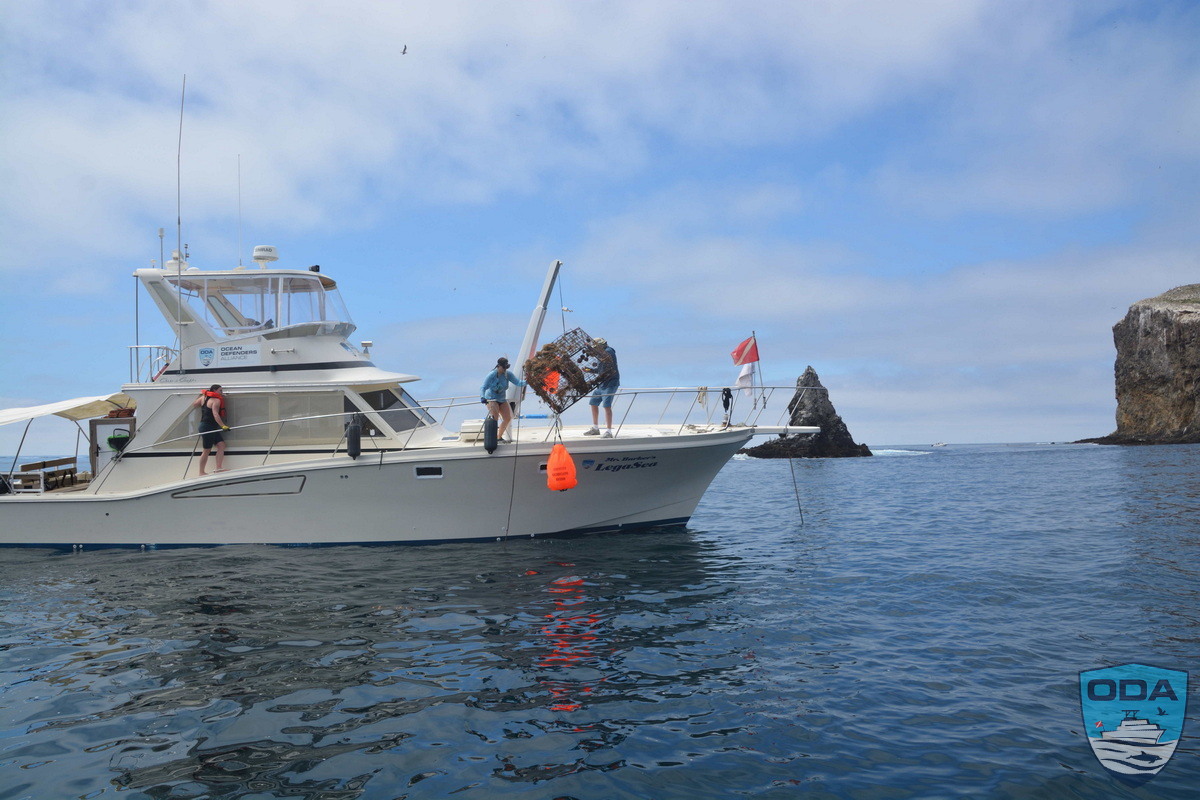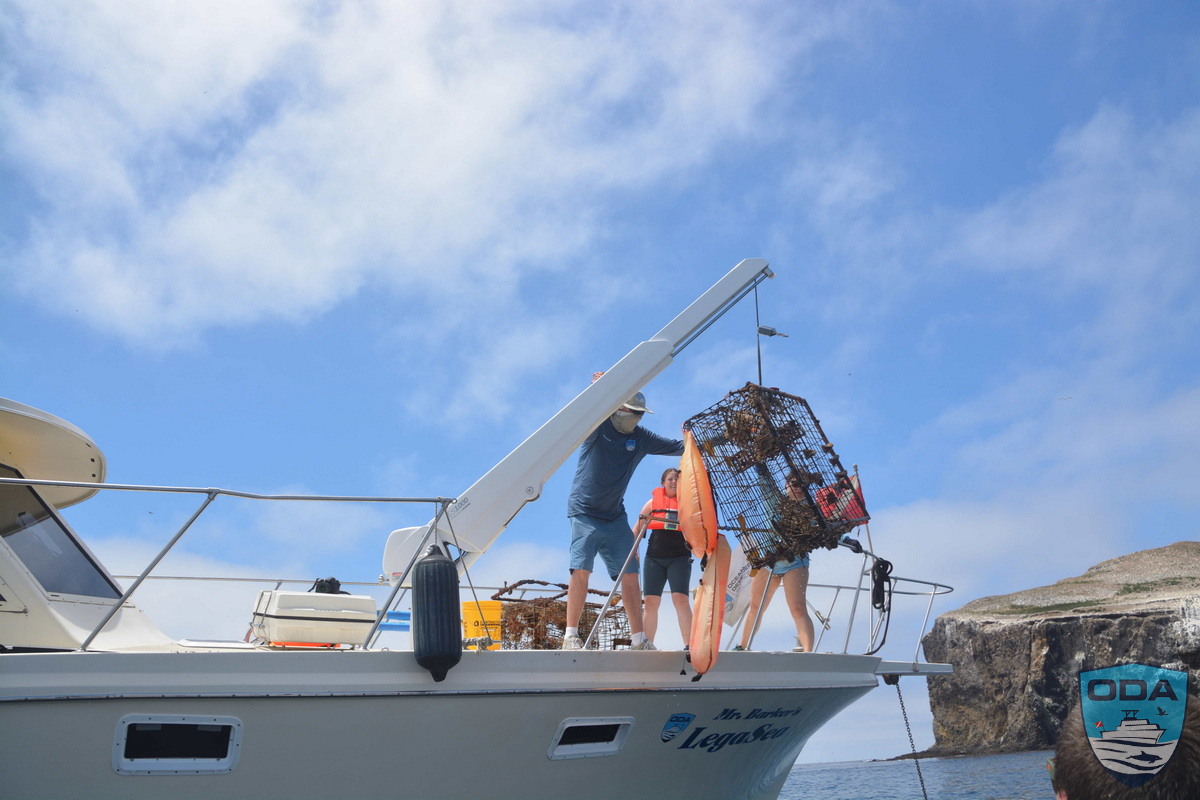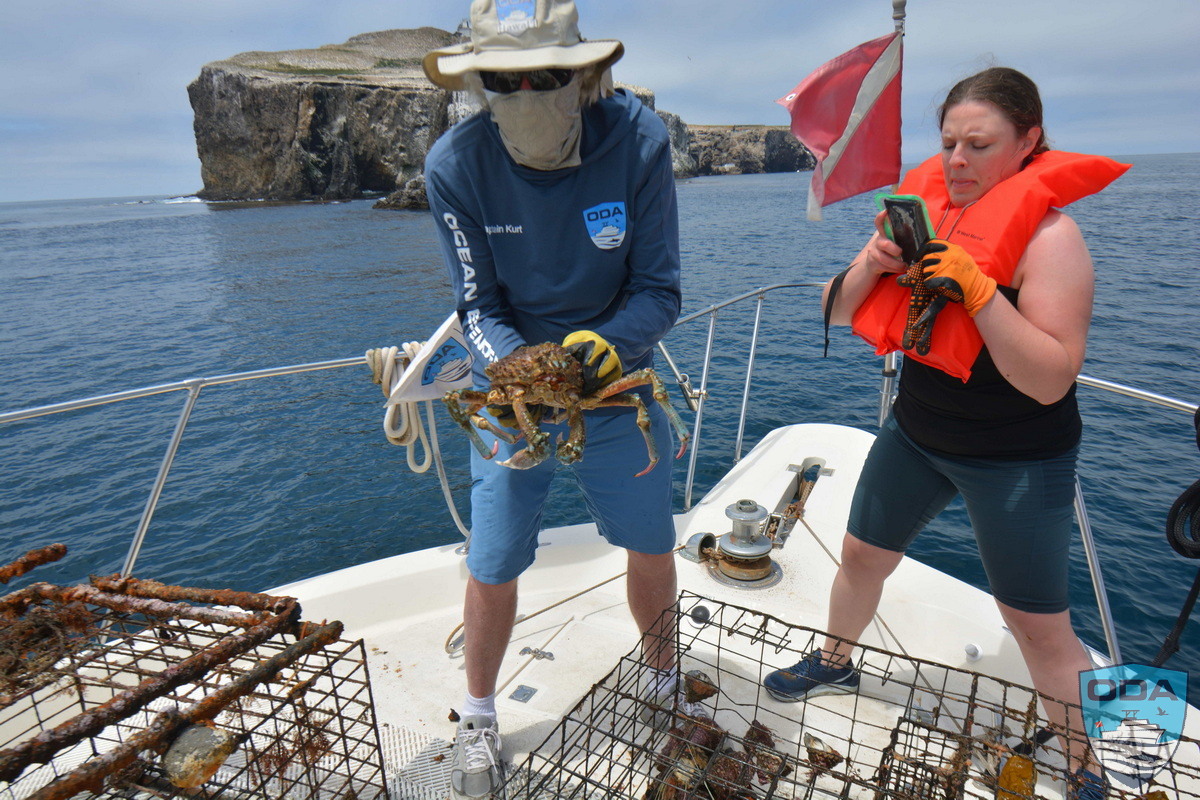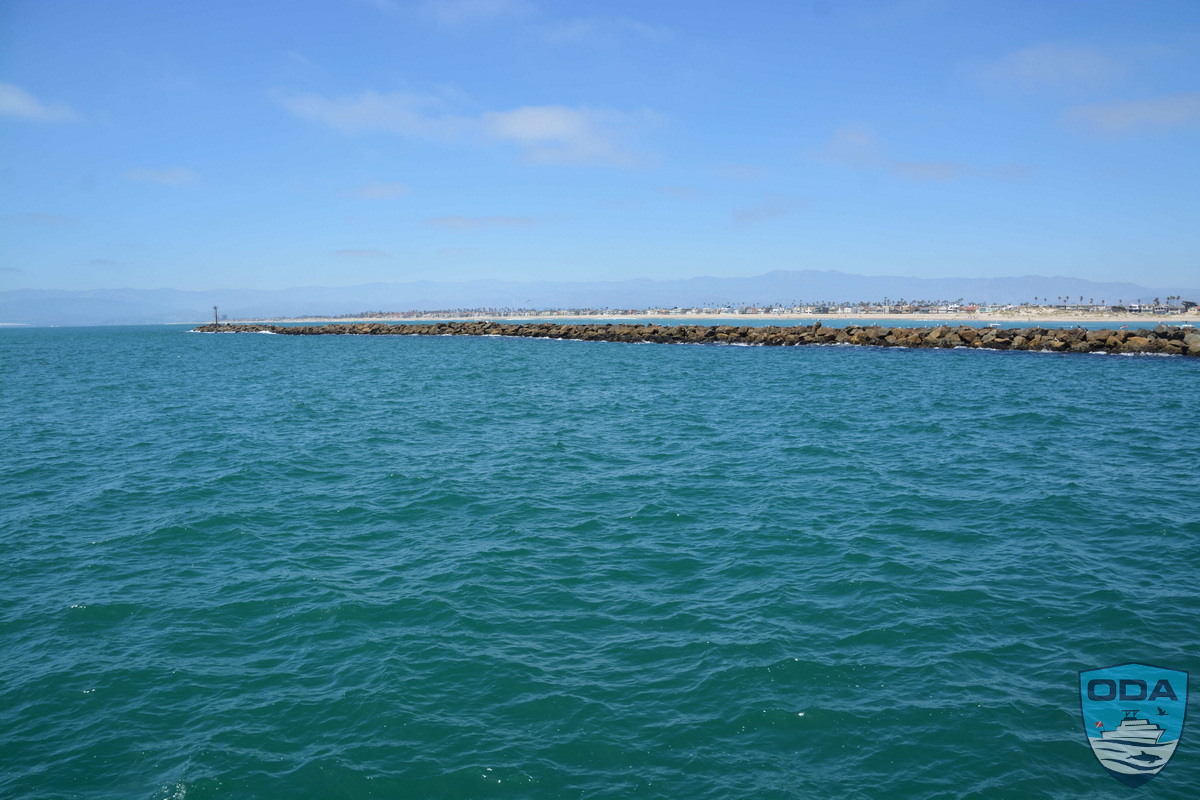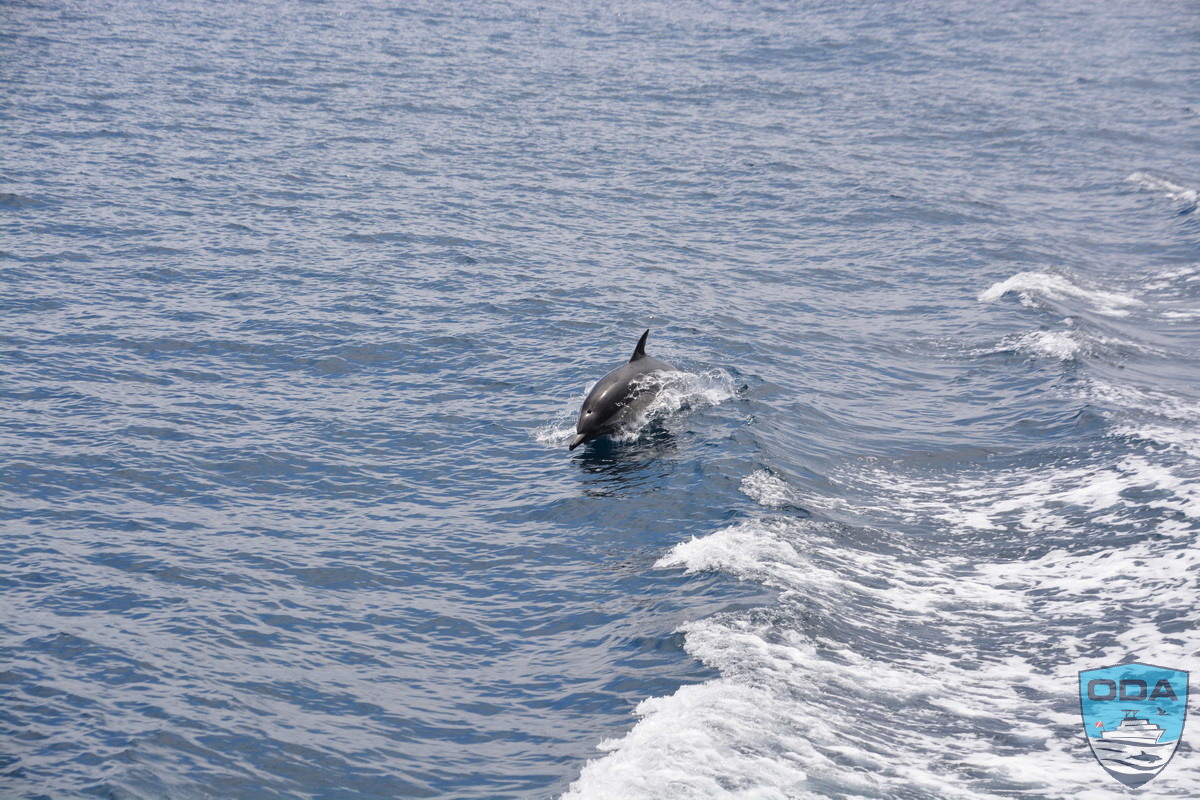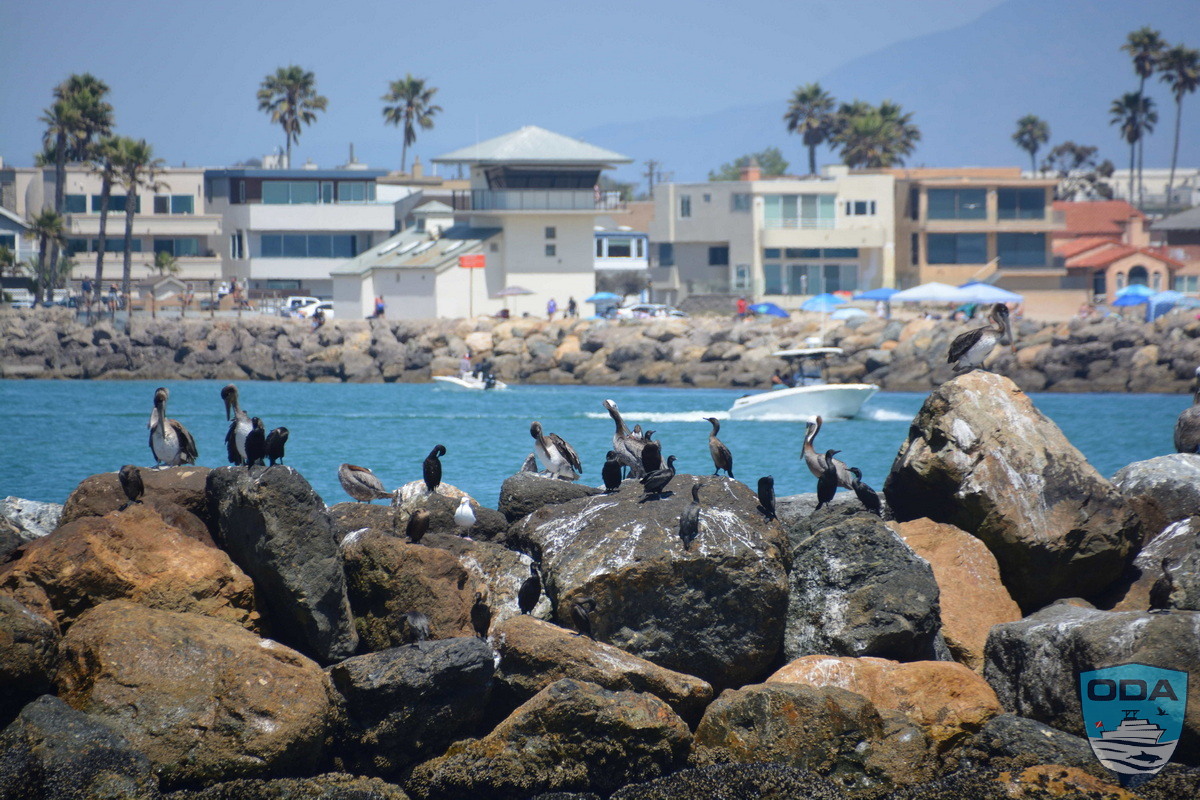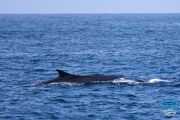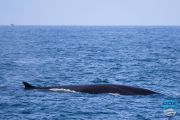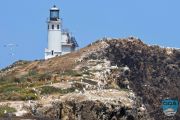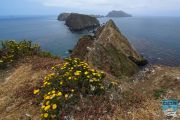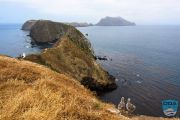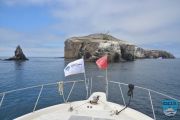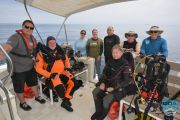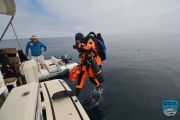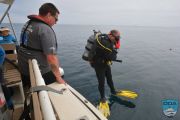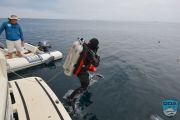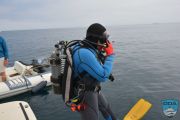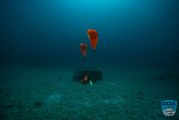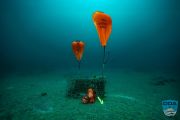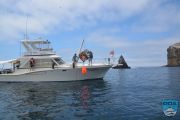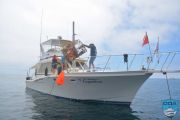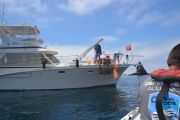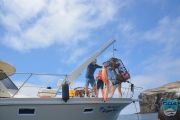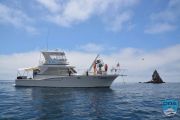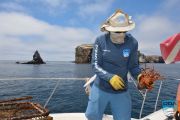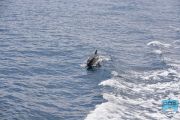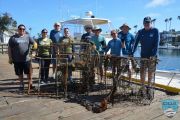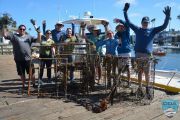By Founder and President Kurt Lieber
The underwater world around Anacapa Island is a divers dream come true.
This island is one of seven that make up the Channel Islands National Marine Sanctuary. Due to their habitat’s protected status, the quantity and size of the animals are something you would rarely see outside the boundaries of the sanctuaries.
ODA has been removing abandoned fishing gear from the waters of 3 of these protected islands—Anacapa, Santa Cruz and Catalina Islands—for over 2 decades.
On Sunday, June 29th, an enthusiastic group of volunteers boarded ODA’s 54-foot boat, Mr. Barkers LegaSea, and headed back to a site where we had recently removed 9 abandoned lobster traps, East Anacapa.
We had a nice mix of crew including 6 folks who’ve been going out with us for years, and 3 people who just recently started volunteering.
The crew this day: Kim Cardenas, Matt Hoover, Stephanie Leja, Dave Merrill, Abigail Sanford, Bart Steger, Geoff Walsh, Mike Wynd, and me.
Since this was the first time out for Stephanie and Matt, I gave them a quick rundown of how the boat operates, where all the safety equipment is and how they could best help. By the time I was done with that, the divers had all their gear stowed, the RIB (rigid inflatable boat) had been taken off the front deck and we pushed off by 9:30.
As we were heading out of the harbor and into the open ocean, I could see the seas were flat. It was going to be a great 11-mile ride to our destination. Kim and I talked about the fact that there was no wave action even against the huge rocks that make up the breakwall. Normally it’s so turbulent there that the waves are shooting 10 feet in the air as they smack into the wall. I’ll get back to why that mattered in a few minutes…
The ride out was uneventful, it was pretty overcast, and we saw hardly any wildlife. Kim and I traversed this exact route to the island just a few days earlier in the week, as we went to hike around East Anacapa. On our way there we were treated to what is known as a feeding frenzy. This happens when dolphins find a school of fish, herd them into a tight bundle and take turns grabbing the fish. While this is all going on the birds grab what they can as the fish struggle to escape the dolphins. The water looks like it is boiling.
While watching this all go on from the boat, we were treated to a rare sight, 2 fin whales! They were casually feeding on the fish and came within 150 feet of us. Fin whales are the second largest of the whales and can reach a length of almost 80 feet.
I bring this up because we were really hoping to have a similar kind of experience on this morning’s trek over. Not to be…So, I’m sharing photos of the whale from that day!
As we were getting closer to our destination, I could see that the currents were just about nil. Very unusual for this dive site, but perfect conditions for our divers.
Since we had already cleaned up the area right next to Arch Rock, we moved further east towards Sharkfin Rock. The waters here were 60 feet deep, and with no current, we felt we’d have good luck finding some abandoned traps.
Once Dave and Matt dropped the anchor, the divers splashed in. Mike went first, and by 11 o’clock he descended the anchor line. Kim, Bart, and Geoff followed suit about 15 minutes later (Mike has more airtime).
This gave the rest of us time to take in the splendor of the day.
Twenty-five minutes elapsed and we didn’t see any lift bags at the surface. This had me thinking that maybe they weren’t going to find anything. But then 2 bags close together popped up 20 feet behind the boat, which indicated that there was a trap attached to them.
Dave and Matt got in the RIB and towed the trap over to the LegaSea, where they were able to hook it onto the davit line.
By this time there were 2 other bags at the surface, but they were a hundred feet apart, which meant that they didn’t hold a trap, but trap remnants most likely. Sure enough, once they had hooked that up to the davit we were hauling up about 40 pounds of trap components.
A few minutes after we had all that aboard, another 2 bags were spotted about 200 feet away. Another trap!
The RIB crew tows the traps and debris back to the boat and hitches them to our crane (called a davit) which hoists the debris up to the top of the boat railing where we can manuever it onto the deck.
Once we had that trap hauled out and on the bow, we found 1 lobster and 2 sheep crabs in it.
After the trap was safely on the deck we got the critters out of there and sent them on their way back to their salty home.
Once the divers were back on the boat we discussed what to do for our second dive. Knowing how calm it was back at the Channel Islands Harbor breakwall, I thought it best that we head back there and see what we could find. We haven’t been able to dive there for the last 3 years, which is due to the waves that regularly pound that area and making it impossible to dive the site safely.
So, we headed back around 1 o’clock. As we were about 3 miles from the breakwall we saw a lot of bird activity off in the distance. Hoping to see some wildlife in action, we diverted from our dive destination and motored over to see what was going on.
The waters were boiling! We could see hundreds of diving birds, and then as we got closer, hundreds of dolphins. Yep, a feeding frenzy!
We got a vide of it for you. Enlarge your screen and imagine you're on the ODA boat with us!
It's hard to take your eyes off the beauty of the dolphins, sometime sychronized in their movements.
We slowly puttered around for about 15 minutes and took in the rare treat.
As we pulled away, we had a job to do, Kim heard on the marine radio that another boat found that group of dolphins and reported that they were seeing whales too… dang, missed it by that much!
When we got back to the coast, we saw that the waters around the breakwall were looking favorable enough to give it a try. I positioned the boat roughly halfway between the north and south end of the wall. Once we dropped the anchor Mike and Kim swam over to the wall and headed north. Next Geoff and Bart headed south.
It took a long time before we saw any lift bags, over a half hour before the first one. RIB Crew Dave and Matt quickly grabbed it and towed it back to the LegaSea. It was loaded with trap remnants. A second bag had hauled up the same.
After an hour, all the divers were back with stories to tell. Turns out the underwater visibility was horrible at less than 5 feet unlike the ideal conditions the divers just experienced at 25 feet in the island waters.
We have worked hard over the years to "give back" to this harbor that our boat calls home. We've removed tons of debris from inside the harbor (where the boats are docked) and we've removed traps along the wall. It’s been 3 years since we've been able to give this a try, and I thought for sure we’d find a bunch of traps, but not to be…
Even though we didn't pull intact traps at the second location, I felt we had a great day.
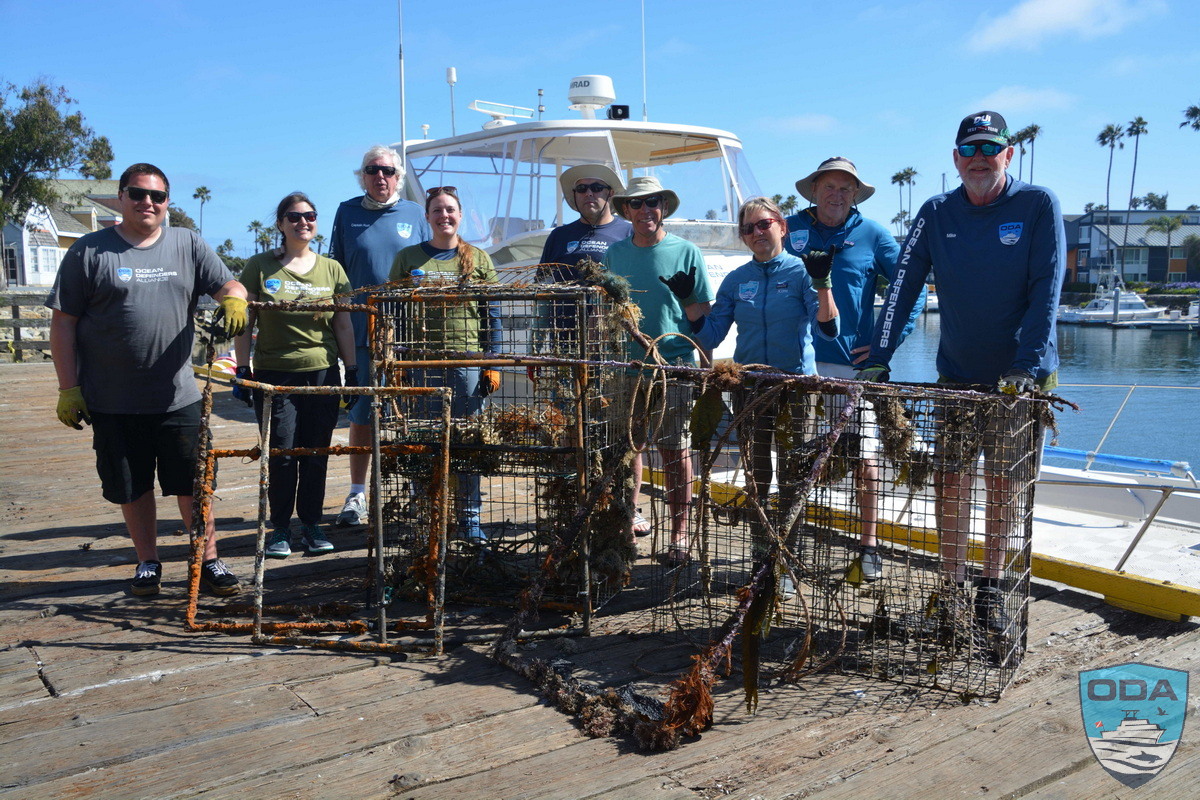
Two traps out of harm’s way, 3 critters freed to live another day, and we were treated to a fantastic display of wild nature at its finest which reminds us of why we do what we do!
We can only do what we do because of people like YOU! Your involvement by investing from where you are, allows us to remove this ghost gear that's hazardous to marine life and their habitats - thank you!
Donate to defend wildlife & habitats!


